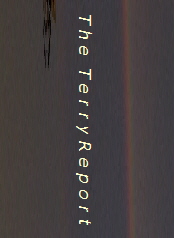|
Anyone under 40, and certainly under 30, will likely not know much about Elizabeth Taylor, unless they have studied American film history. She was from a different era, but she was a woman and actress who managed to transcend eras, both in film and our national life. She was a survivor, an insistent and persistent contributor to charity who helped take HIV/AIDS from the back alley mentality of the 1980s and put it in the national consciousness. If she had done nothing more than that, her passing would be noteworthy.
I was too young to have experienced the long duration of her career (I would like to say much too young, but that would not be true). She was long a big star by the time I went through high school. I didn’t really understand all that fuss that was made of her over the years, until I saw some of her early films and began to understand how she had touched people’s lives before I came along.
She was a luminous presence, especially in black and white films. Everything about her said star, not just because she could act and look good, but, far beyond that, she was adorable to men, women and children alike. She had incredible magnetism that drew all eyes in her direction. It is not too much to say that there seemed to be something magical about her in those early films.
She made the transition from child/teenage star to roles for adults with apparent ease. It seemed she only got better. If you have never seen Cleopatra, the first movie she made with husband to be Richard Burton, do so. Though the movie was not a great success (some considered it a huge flop) it is worth watching, first, as a story and, second, just to see Taylor and Burton. The movie flairly cracks with sexual energy. You can feel it coming off a television screen forty years or more after it was made. This is the movie they made while they were falling in love and their affair was the talk of the entire world.
There were a few others that almost made an impression on me. Who’s Afraid of Virginia Woolf?, where Taylor and Burton play a married couple at the end of their boozy ropes, was one of the biggest movies of its day. I am not sure I like it all these years removed and I probably would not watch it again. It is hard to take, with so much anger and bitterness spewing between husband and wife, but there is no doubt it is one of the most notable films of the 20th century.
A personal favorite of mine is The Sand Piper. Taylor and Burton, again, play two people attracted to each other, both lonely and lost and in over their heads with attraction and need. The movie is like a little set piece and I particularly liked the setting (Big Sur, California) and the music. I saw it at a time in my own life when I was starting to understand more about grown up relationships, attractions and the disasters they could bring.
Above all, Taylor can be said to have been a woman who lived, loved and survived through too many marriages, personal tragedy and changing times and circumstances. There is no one on the celebrity scene these days who could match her. You’d have to throw together five people, from Lady Gaga through Natalie Portman to come close.
Long after the controversies over her marriages have been forgotten, her films will remain. She was, indeed, an amazing, luminous presence on film, particularly in her earliest years as a teenager. Her role with Burton in Cleopatra seems to make it obvious that they had to be together. Later, she had the courage to play broken but still striving older characters who were looking and longing for love and human contact. I always thought of her as of my parent’s generation, because she was an adult, with a capital A, while I was still a child, but now I realize she and those movies touched my life, too, as I was growing into adulthood and beyond.
Doug Terry, 3.23.11
|
|



